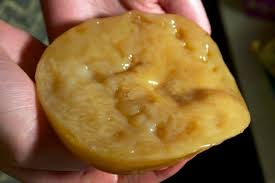
When brewing kombucha, there are many beneficial byproducts. A healthy, probiotic liquid is the primary reward, but after many brews, a typical result is a large number of spooky-looking substances called scobys. Like me, most home kombucha makers house them in scoby hotels that take up most of the tall refrigerator space.
Personally, I have experimented with scoby sorbet and dehydrated scoby fruit leathers, as well some chunks of treats for my 90-lb. chocolate lab — who surprisingly loved it!
Kombucha Kamp, with Hannah Crum, shares five ideas for using scobys around the house and garden. Tips on using scobys for facials, gardening, feeding pets and as an ingredient in vegan sushi are the start of creative ideas.
Most fascinating of the potential uses is topical as a living band-aid or, in some cases, as a second skin or a biofilm. Kombucha Kamp points out that “one of the terms for the SCOBY is zooglea, which translates as “living skin” and helps heal the skin from burns, wounds and other skin ailments. Biofilms are not new and have a wide range of applications from medicinal bandages, replacement blood veins, speaker diaphragms and more. They have one of the bacteria native to the Kombucha culture – to create this biofilm.”
At home, you can apply pieces of the scoby topically. Put a piece on a cut, burn or wound and place a band-aid over it. This will prevent the growth of bad bacteria and start the healing process.
But there is so much more that can benefit others with this goopy mass of bacteria. And there are some people that are doing amazing things. Suzanne Lee gave a Ted talk about making clothing from dried scobys, given that it contains the cellulose similar to some fabrics. It is called ScobyTec.
Sasha Laurin is manufacturing the material in the form of a leather, making Kombucha Couture a trendy fashion statement. It creates a sustainable fabric out of the natural brewing byproduct.
